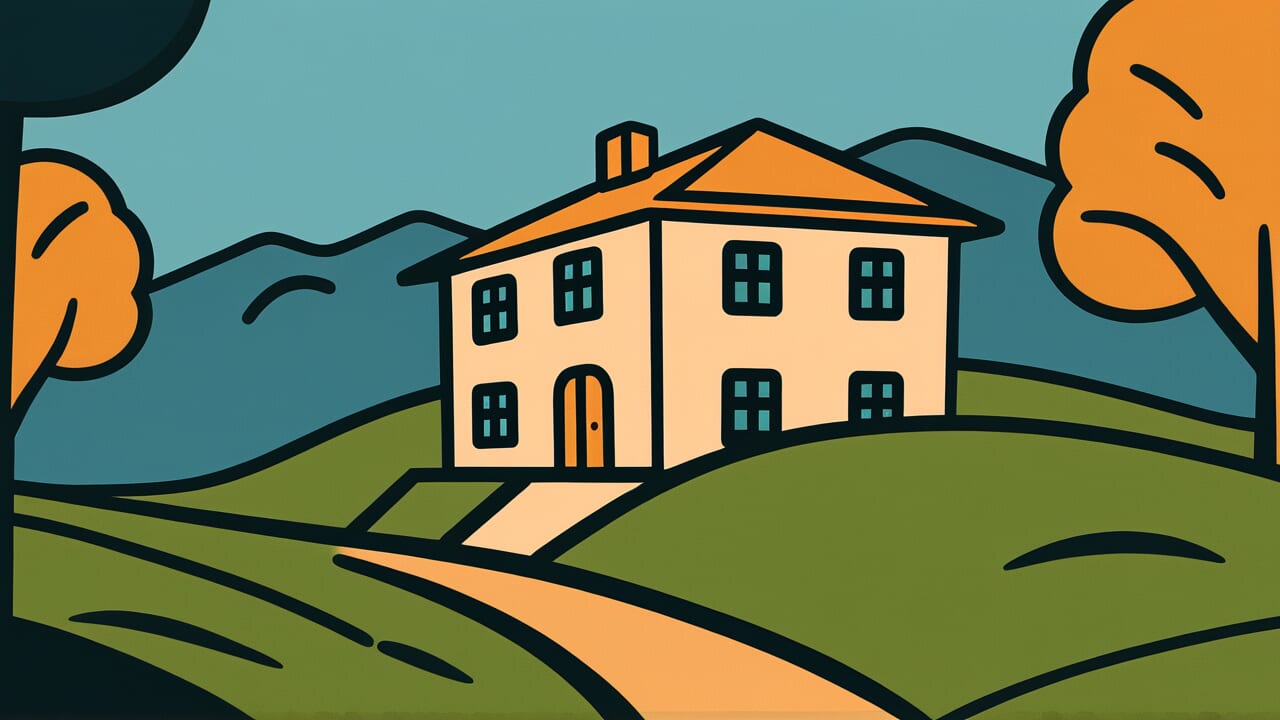How to Read “The eastern neighbor’s hill”
tōka no kyū
Meaning of “The eastern neighbor’s hill”
“The eastern neighbor’s hill” is a proverb about how hard it is to recognize the true value and talents of people close to us.
Even when an excellent person lives next door, we often fail to see their true worth simply because they’re too close to us. This proverb points out this common human tendency.
This saying is used when evaluating people. Distant celebrities and authority figures seem wonderful to us.
But we overlook the excellent qualities of family members, coworkers, and friends right beside us. The proverb warns us against this behavior.
This psychology hasn’t changed in modern times. We envy someone’s success on social media while taking the efforts and talents of nearby people for granted.
The closer we are to someone, the more we notice their flaws and miss their strengths. This proverb sharply points out this bias in human perception.
Origin and Etymology
No clear written records explain the origin of “The eastern neighbor’s hill.” However, we can make interesting observations from how the phrase is constructed.
“Tōka” means “the neighboring house.” In ancient Japan, people often used directions to describe locations.
Expressions like “eastern neighbor” and “western neighbor” were common. Here, “tōka” likely refers to “neighbors in general” rather than a specific direction.
The word “oka” (hill) meant more than just a small elevated piece of land. It also carried meanings of “large” or “excellent.”
So “The eastern neighbor’s hill” probably meant “an excellent person in the neighboring house.” This interpretation is widely accepted.
This proverb likely emerged under the influence of ancient Chinese thought. The human tendency to “honor the distant and belittle the near” has long been recognized in East Asian culture.
Our ancestors expressed this tendency to overlook the value of nearby people through the concrete image of “an excellent person next door.”
This expression shows the deep insight of our predecessors. They embedded profound human understanding into an everyday scene.
Usage Examples
- I dismissed my longtime coworker’s suggestions, but when an outside expert said the same thing, everyone praised it. This is truly “The eastern neighbor’s hill.”
- I ignored my parents’ advice, but when a celebrity said the same thing, I was convinced. “The eastern neighbor’s hill” is so true.
Universal Wisdom
“The eastern neighbor’s hill” reveals a universal truth. Human perception becomes distorted by distance. Why do we overlook the value of people close to us?
One reason is the familiarity that closeness brings. The words and actions of people we see every day seem too ordinary to be special.
Meanwhile, words from distant people or those we rarely meet carry weight because of their rarity. The human brain is wired to find value in unusual things.
Another reason is how closeness makes flaws visible. The closer someone is, the more chances we have to see their weaknesses and failures.
No one is perfect, yet daily contact emphasizes people’s imperfections. Distant people are easily idealized because we can’t see their flaws.
A deeper reason is our dependence on authority. When we lack confidence in our own judgment, we rely on external standards like titles and reputation.
Neighbors lack the decoration of titles, so it takes courage to fairly evaluate their actual abilities.
This proverb has been passed down for generations because this human trait never changes across time.
Our ancestors understood the paradox that truly valuable things are actually closest to us.
When AI Hears This
The physical phenomenon of the eastern house looking beautiful in morning sunlight actually demonstrates a structural bias in information gathering.
The human visual system perceives the same object completely differently depending on how light hits it. Morning’s slanted light emphasizes texture and makes colors appear vivid.
When we look at the eastern house, we’re getting information through the filter of “the most beautiful lighting conditions.”
Meanwhile, we observe our own house under all lighting conditions throughout the day. Not just beautiful morning light, but flat midday light, tired evening light, and nighttime darkness.
With overwhelmingly more information, we notice more flaws. This is exactly what information theory calls “sampling bias.”
We collect data about the eastern house only during limited times under the best conditions, yet we mistake this for the complete picture.
Even more interesting is the difference in observation frequency. We look at our own house dozens of times daily, making us sensitive to small changes and deterioration.
We only glance at the neighbor’s house in passing. Cognitive science shows that the more frequently we encounter something, the more we enter fault-finding mode.
“The eastern neighbor’s hill” looks beautiful due to a double asymmetry. Physical factors like lighting conditions combine with information-gathering patterns like observation frequency.
This creates an extremely structural cognitive error.
Lessons for Today
“The eastern neighbor’s hill” teaches us about rediscovering value. Why not look at the people around you with fresh eyes again?
In modern society, information about distant successful people and celebrities floods through social media and media outlets.
While we admire their brilliant images, aren’t we overlooking the good qualities of family and coworkers we see every day? This proverb poses an important question to us.
As a practical method, try observing people close to you as if meeting them for the first time.
If you met them today for the first time, what would impress you about them? Put into words the abilities and kindness that have become ordinary through years of acquaintance.
It’s also important to shift evaluation standards from “distance” to “essence.” Not who said it, but what was said. Not where they are, but what they’re doing.
With such an essential perspective, true value becomes visible.
The most precious treasures are actually within reach. This proverb teaches us this warm truth.


Comments